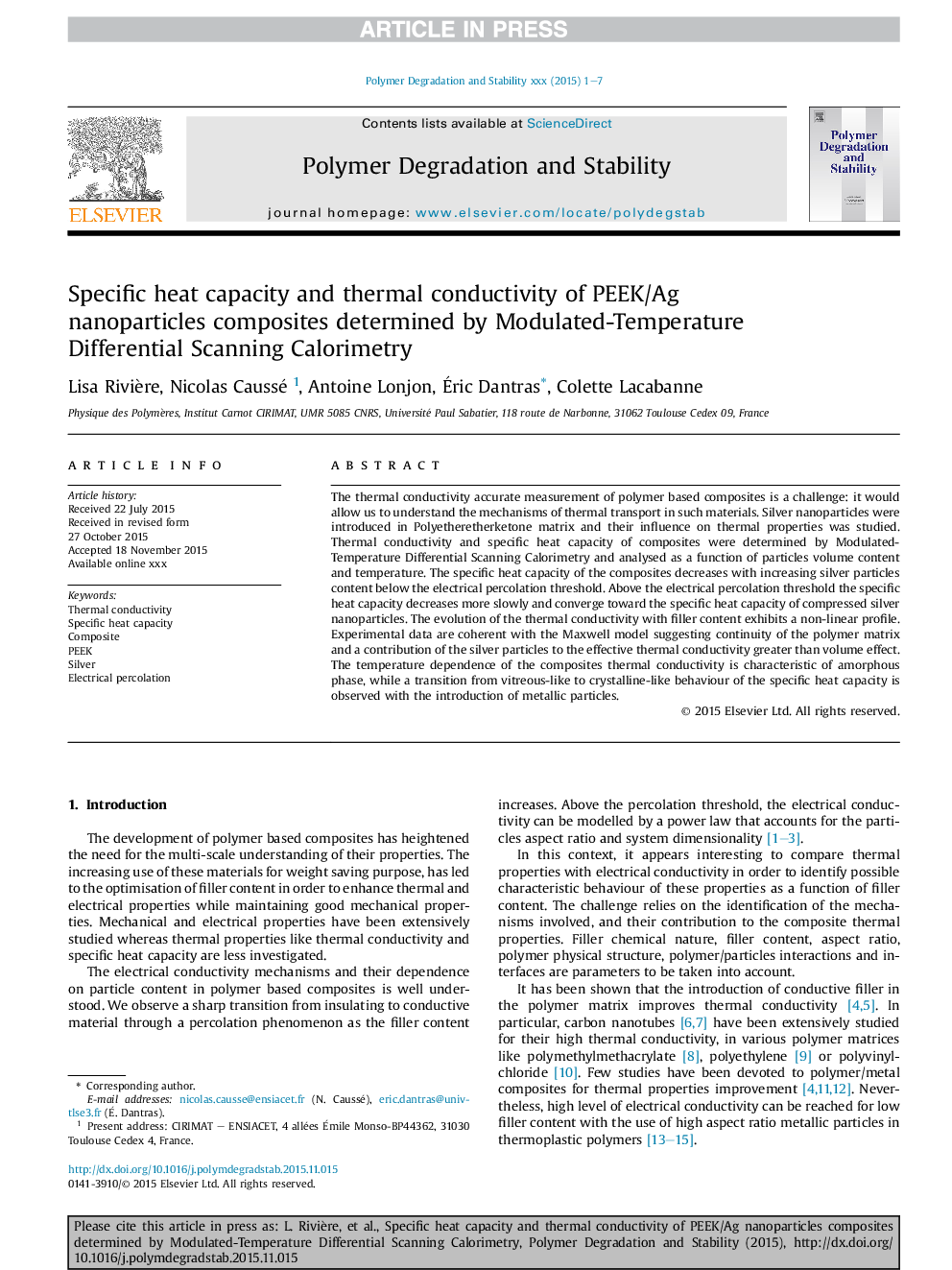| Article ID | Journal | Published Year | Pages | File Type |
|---|---|---|---|---|
| 5201168 | Polymer Degradation and Stability | 2016 | 7 Pages |
Abstract
The thermal conductivity accurate measurement of polymer based composites is a challenge: it would allow us to understand the mechanisms of thermal transport in such materials. Silver nanoparticles were introduced in Polyetheretherketone matrix and their influence on thermal properties was studied. Thermal conductivity and specific heat capacity of composites were determined by Modulated-Temperature Differential Scanning Calorimetry and analysed as a function of particles volume content and temperature. The specific heat capacity of the composites decreases with increasing silver particles content below the electrical percolation threshold. Above the electrical percolation threshold the specific heat capacity decreases more slowly and converge toward the specific heat capacity of compressed silver nanoparticles. The evolution of the thermal conductivity with filler content exhibits a non-linear profile. Experimental data are coherent with the Maxwell model suggesting continuity of the polymer matrix and a contribution of the silver particles to the effective thermal conductivity greater than volume effect. The temperature dependence of the composites thermal conductivity is characteristic of amorphous phase, while a transition from vitreous-like to crystalline-like behaviour of the specific heat capacity is observed with the introduction of metallic particles.
Related Topics
Physical Sciences and Engineering
Chemistry
Organic Chemistry
Authors
Lisa Rivière, Nicolas Caussé, Antoine Lonjon, Ãric Dantras, Colette Lacabanne,
